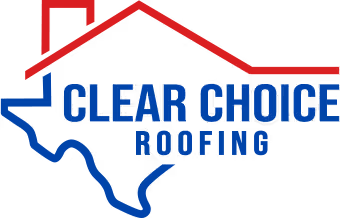When considering durable roofing options, many homeowners wonder about their resilience against severe weather, particularly hail. Metal roofs are highly resistant to hail damage, offering better performance compared to traditional roofing materials. Understanding their strength can help you make more informed decisions when selecting the right roofing system for your home.
At Clear Choice Roofing, we know that many myths surround metal roofs and hail. While it’s true that no roof is entirely impervious, metal roofing can withstand impacts from hail significantly better than asphalt or wood shingles due to its sturdy composition. During storms, these roofs typically sustain minimal cosmetic changes rather than structural damage, making them a reliable choice for homeowners in areas prone to inclement weather.
If you're contemplating the best roofing solution for your property, it’s essential to consider both durability and aesthetics. Choosing a metal roof not only enhances the visual appeal of your home but also offers peace of mind, knowing it is equipped to handle extreme conditions. Trust Clear Choice Roofing to guide you through the selection process and ensure that your investment is protected for years to come.
Metal Roofs and Hail Resistance
Metal roofs are engineered to withstand various weather conditions, including hail. Their design and material composition significantly enhance their resistance to hail damage, offering long-lasting protection for your home.
Common Metal Roofing Materials
When considering metal roofing for hail resistance, popular materials include aluminum, steel, and copper. Each option has distinct properties.
- Aluminum is lightweight, resistant to corrosion, and can withstand impacts well.
- Steel is stronger and denser, providing excellent durability and longevity.
- Copper offers a unique aesthetic but comes at a higher cost.
Metal roofs often feature coatings or finishes that enhance their durability against hail. These coatings can improve resistance to dents and further protect the underlying material. It’s essential to select a reputable contractor, like Clear Choice Roofing, to ensure the right material and finish is installed to maximize hail resistance.
The Impact of Hail on Metal Roofing
Hail can still cause some damage to metal roofs, but the extent varies based on several factors. Hailstone size and the roof's slope play crucial roles in the potential for damage. Smaller hailstones may bounce off without causing dents, while larger stones can create minor dings.
Standing seam panels tend to perform well against hail due to their interlocking design, which reduces the likelihood of failures at the seams. Regular inspections are recommended to assess any potential hail damage and maintain the roof's integrity. Clear Choice Roofing provides expert assessments and assistance if you suspect hail impacts on your roof, ensuring it remains in top condition.
Comparing Roofing Materials Against Hail
When choosing a roofing material, it's important to assess how well it withstands hail damage. Different materials have varying levels of resistance, which can affect their longevity and your home's safety.
Metal vs. Asphalt Shingles
Metal roofs are renowned for their durability against hail. They come with a class 4 impact rating, meaning they can endure larger hail stones without significant damage. Unlike metal, asphalt shingles are more susceptible to dents and cracks, especially as they age.
In hail-prone areas, many homeowners opt for metal roofs for their resilience. While asphalt shingles can last anywhere from 15 to 25 years, metal roofs often have a service life of 40 years or more. This longevity makes metal a cost-effective choice despite the higher initial investment.
Durability of Different Roofing Materials
When evaluating roofing materials, focus on their impact resistance. Metal roofs excel in this regard, easily resisting hail and other severe weather. Asphalt shingles may require replacement more frequently due to potential hail damage.
Other roofing options, such as wood shakes and tile, also have varying durability. Wood may crack, while tile can chip under heavy hail. If durability is your priority, consider metal roofing systems, which have proven their worth in hail-heavy regions.
For those in Austin seeking resilient roofing solutions, Clear Choice Roofing offers expert installations tailored to withstand harsh weather conditions.
Identifying and Assessing Hail Damage
Recognizing hail damage to your metal roof early can help prevent more extensive roof damage down the line. Understanding the signs and distinguishing between cosmetic and structural damage is crucial in assessing the integrity of your roofing.
Signs of Hail Damage to Metal Roofs
When inspecting your metal roof for hail damage, look for specific indicators. Common signs include:
- Dents or Indentations: These may vary in size and can be quite subtle. They can compromise the roof's durability over time.
- Scratches or Scuffs: These superficial marks can expose the underlying metal, leading to rust and corrosion if not addressed.
- Loose or Missing Fasteners: Hail can loosen screws or clips that secure panels, increasing the risk of leaks.
- Uneven Areas: Hail damage can create a wavy appearance, disrupting the roof's intended profile.
For a thorough evaluation, consider consulting a professional like Clear Choice Roofing. They can help assess the true extent of any hail damage you might encounter.
Distinguishing Cosmetic vs. Structural Damage
Not all damage from hail storms poses the same risk. It's vital to differentiate between cosmetic and structural damage.
Cosmetic Damage includes superficial issues that may not immediately affect functionality, such as minor dents, scratches, or discoloration. While these can impact aesthetics, they typically don't compromise the roof's integrity.
Structural Damage, on the other hand, involves issues that could lead to significant problems. This includes extensive denting that affects the roof's framework or compromised fasteners. If left unchecked, structural damage can lead to leaks, increased energy costs, and costly repairs.
Each type of damage requires different approaches for resolution. Contacting experts like Clear Choice Roofing can provide clarity on what your roof needs to maintain its longevity.
Insurance Considerations for Hail Damage
When it comes to hail damage on metal roofs, understanding your insurance coverage is crucial. Knowing how to navigate claims and the role of insurance adjusters can help you secure the compensation you deserve.
Navigating Claims with Insurance Companies
Filing an insurance claim for hail damage involves several critical steps. Start by documenting the damage thoroughly with photographs and videos. This evidence can strengthen your claim when communicating with your insurance company.
Next, review your homeowners insurance policy to understand the coverage specifics. Many policies include hail damage, but details can vary widely. Contact your insurance provider promptly to get the claims process started.
Clear Choice Roofing can assist you throughout this process, ensuring that you understand the documentation required and the timeline involved. Be prepared to advocate for yourself, as insurance companies may aim to minimize payouts. Keep records of all communications for reference.
The Role of Insurance Adjusters
Insurance adjusters play a key role in assessing the damage and determining claim eligibility. They evaluate the extent of the hail damage and provide a report to your insurance company.
During their visit, it's important to be present and provide any supporting documentation, including your own evidence. This interaction can influence the adjuster's evaluation significantly. Be clear about your observations and any concerns.
Remember that not all damage is visible. An adjuster may overlook certain issues unless adequately informed. If you have concerns about their assessment, consider hiring an independent adjuster for a second opinion. Clear Choice Roofing can guide you if you face challenges in this process, ensuring you receive a fair assessment.
Preventive Measures and Maintenance
To protect your metal roof from hail damage, it is essential to take proactive steps in both material selection and regular upkeep. Implementing necessary preventive measures can significantly extend the life of your roof.
Choosing Hail-Resistant Roofing
When selecting a metal roof, aim for materials specifically designed to withstand severe weather. Look for options with a high rating for impact resistance, such as those certified by the Underwriters Laboratories (UL 2218). These materials can reduce the risk of dents and other minor damage from hail. Additionally, consider roofs with a durable coating. This not only enhances the roof's ability to resist impacts but can also help to prevent corrosion over time.
Working with a reputable roofing contractor, like Clear Choice Roofing, ensures you choose high-quality materials suited to your needs. They can provide detailed information about various products' durability and what works best for your location.
Regular Maintenance to Mitigate Hail Damage
Regular maintenance is critical in mitigating potential hail damage. Schedule inspections at least once a year to check for wear and tear. Pay attention to areas where the metal might be vulnerable, such as flashing or seams. Removing debris from the roof and gutters can prevent water buildup, which could lead to more severe issues.
If you notice any dents or scratches after a storm, address them promptly. Minor damage can often be repaired easily, saving you from more extensive repairs down the road. Consulting a qualified roofing contractor can help you assess any storm-related damage accurately. A timely response can maintain your roof's integrity and performance over the years.
Frequently Asked Questions
Metal roofs are designed to withstand various weather conditions, including hail. Understanding their resilience and how they perform during hail events can help property owners make informed decisions.
How can hail impact the integrity of a metal roof?
Hail can cause cosmetic damage to metal roofs, usually in the form of dents and scratches. While these cosmetic issues may not compromise structural integrity, they can affect the roof's appearance. If the hail is large enough or hits with enough force, it could potentially lead to more significant issues if not addressed.
What characteristics make a metal roof resistant to hail damage?
Metal roofs often feature a smooth surface, which helps minimize damage. Their materials, such as steel or aluminum, provide durability against impact. Additionally, the gauge of the metal plays a role, with thicker materials typically resisting greater forces from hail compared to thinner alternatives.
How does hail size affect potential damage to a metal roof?
The potential for damage increases with hail size. Smaller hailstones may produce minimal dents, while larger stones can lead to more noticeable impacts. Reports show that hail larger than one inch is likely to cause significant dents, emphasizing the importance of size in assessing risk.
To what extent does homeowner's insurance typically cover hail damage on metal roofs?
Homeowner's insurance coverage for hail damage varies by policy. Many policies cover hail damage but may classify it as cosmetic if no structural harm occurs. It's essential to review your specific policy details and consult with your insurance provider for clarification on coverage limits for metal roofs.
How does the durability of metal roofs compare when facing severe weather conditions?
Metal roofs excel in severe weather conditions due to their durability. They resist warping, cracking, and peeling, which are common issues with other roofing materials. This durability often makes them a preferred choice in regions prone to extreme weather events, including hail storms.
Are there specific classifications for metal roofs regarding their resistance to hail?
Yes, metal roofs can be classified based on their impact resistance. The rating system typically includes classifications from Class 1 to Class 4, with Class 4 offering the highest resistance to hail. Using roofs with a higher classification can provide additional peace of mind against hail damage.
For reliable installation of durable metal roofs, consider reaching out to Clear Choice Roofing. They specialize in roofing solutions tailored to withstand varying weather conditions, ensuring your property stays protected.



